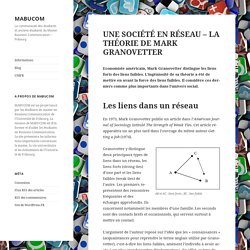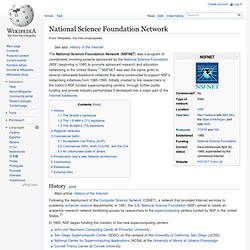

UNE SOCIÉTÉ EN RÉSEAU – LA THÉORIE DE MARK GRANOVETTER. Economiste américain, Mark Granovetter distingue les liens forts des liens faibles.

L’ingéniosité de sa théorie a été de mettre en avant la force des liens faibles. Il considère ces derniers comme plus importants dans l’univers social. En 1973, Mark Granovetter publie un article dans l’American Journal of Sociology intitulé The Strength of Weak Ties. Cet article réapparaitra un an plus tard dans l’ouvrage du même auteur Getting a Job (1974). Granovetter y distingue deux principaux types de liens dans un réseau, les liens forts (strong ties) d’une part et les liens faibles (weak ties) de l’autre. New data suggest social media brings out the best in us, after all. “I love deadlines,” English author Douglas Adams once wrote.

“I love the whooshing noise they make as they go by.” We’ve all had the experience of wanting to get a project done but putting it off for later. Sometimes we wait because we just don’t care enough about the project, but other times we care a lot—and still end up doing something else. I, for one, end up cleaning my house when I have a lot of papers to grade, even though I know I need to grade them. Emotions Can Be Contagious on Online Social Networks. Could reading a cheerful or depressing post on Facebook influence your own mood?

Apparently so, according to a new study conducted by the social networking company. When Facebook removed positive posts from the news feeds of more than 680,000 users, those users made fewer positive posts and more negative ones. Similarly, when negative posts were removed, the opposite occurred. The findings provide experimental evidence that emotions can be contagious, even without direct interaction or nonverbal cues, the researchers say. [The Top 10 Golden Rules of Facebook] "These results indicate that emotions expressed by others on Facebook influence our own emotions," the authors wrote in the study published June 17 in the journal Proceedings of the National Academy of Sciences. Contagious moods The idea that emotional states can spread among people without their awareness, known as emotional contagion, has been shown before in laboratory experiments.
Networked Society Shaping Ideas. Networked Society, On the Brink. Language Data Reveals Twitter’s Global Reach. The Power of Visual Content and Brand Visuals in Action. Pinterest. The Ultimate Guide To Pinterest For Every Brand: Engage And Flourish. On the surface, Pinterest metrics seem simple, but underneath they can be confusing.

This follow-up to our Ultimate Guide for Pinterest should help you gain a deeper understanding of Pinterest metrics and provide tips on effectively engaging with and growing your follower base. As with Twitter, Pinterest allows you to post content to your feed that will appear in the news feed of your followers. The catch is unlike Twitter, you actually have multiple feeds that you can post to in the form of boards. This in itself is not hard to understand; think of it as categorizing the content you post. The confusing part comes when you look deeper and realize each board has its own set of followers (see this blog post by a Pinterest developer on the inner workings of the follower graph). For Every Brand: Engage And Flourish ...
Brand Algorithms - Pinformation: Brands on Pinterest. Home : Blog : February 2013 February 27, 2013 by Brand Algorithms Pinterest has surprised the social media world by rising to become one of the most popular social media networking sites in a very short period of time.

According to totalpinterest.com Pinterest has 25 million+ active users worldwide and another source puts the number of unique visitors at 31.5million+ (compete.com). Pinterest.com is ranked #35 in the world. Social media sites are also seeing a gender split - women use social media more than men. More women are on Facebook and Twitter. About 57% of Facebook and 59% of Twitter users are women.Women more attracted to Pinterest while young techie men hang out on Google+. Social Media Today - (Current Session: General navigation)
Press Release Distribution, Financial Disclosure, Online Newsrooms, PR, Public Relations, Investor Relations, EDGAR filing, XBRL, Breaking News, Business News, Financial News. A. Theory Outline - Outline of a Multilevel Theory. Jan van Dijk Department of Communication, University of Twente, The Netherlands.

National Science Foundation Network. The National Science Foundation Network (NSFNET) was a program of coordinated, evolving projects sponsored by the National Science Foundation (NSF) beginning in 1985 to promote advanced research and education networking in the United States.[1] NSFNET was also the name given to several nationwide backbone networks that were constructed to support NSF's networking initiatives from 1985-1995.

Initially created to link researchers to the nation's NSF-funded supercomputing centers, through further public funding and private industry partnerships it developed into a major part of the Internet backbone. History[edit] Following the deployment of the Computer Science Network (CSNET), a network that provided Internet services to academic computer science departments, in 1981, the U.S. National Science Foundation (NSF) aimed to create an academic research network facilitating access by researchers to the supercomputing centers funded by NSF in the United States.[2] The 56-kbit/s backbone[edit]